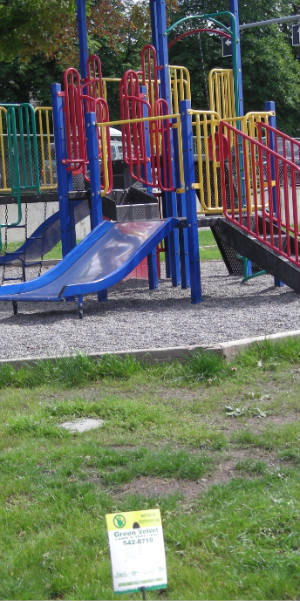
The Special Committee on Cosmetic Pesticides has announced that it’s going to hold its third meeting tomorrow (October 6th and several other meeting dates have also been announced), followed by the announcement that MLA Bill Bennett will be taking over as convener and co-chair of the Committee. The Special Committee, made up of both Liberal and NDP MLAs, was appointed in Spring 2011 to “examine, inquire into and make recommendations with respect to the elimination of the unnecessary use of pesticides in British Columbia.”
The Premier says she wants a ban on cosmetic pesticides. The Leader of the Opposition introduced a private member’s bill to do just that. Polls say that about 76% of British Columbians want such a law, and during the government’s public consultations about 88% of respondents called for a ban. Is BC finally going to join Ontario, Quebec and Nova Scotia in banning the use of pesticides for lawns and other solely aesthetic reasons?

Putting aside for one moment the absurdity of an industry association lecturing the public and politicians about what democracy requires, let’s examine the claim that it is unscientific to call for restrictions on cosmetic use of pesticides.
Unscientific?
Croplife Canada’s central theme is that scientists at Health Canada exhaustively test all pesticides sold in Canada and approve them as safe to use. The uneducated masses have no business (according to this view) questioning the extensive studies done by government scientists.
Now at this point I could get into a technical discussion about the scientific, practical and ethical challenges that Health Canada scientists face in using animal studies to evaluate whether a pesticide used now causes cancer 15 years from now, either alone or in combination with other chemicals. I could point out the science is always evolving (virtually all of the older pesticides that Health Canada has been re-evaluating were found to have had inadequate safety measures, and one in five are being discontinued for safety reasons). I could talk about the fact that Health Canada only rarely does its own studies, but instead relies on studies commissioned by the pesticide industry.
But the simplest response to Croplife Canada is to point out that while Health Canada confirms that (in its view) the risks of pesticides are “acceptable”, you need only read the government-approved labels for these pesticides to realise that they are not “safe” and pose significant risks to human health and the environment.
Read, for example, the label for Wilson® Lawn Weedout® Concentrate – a pesticide available for home owners to control “Dandelion, clover, chickweed, plantain and many other hard-to-kill weeds.” It contains 2,4-D, as well as herbicides Mecoprop-P and Dicamba.
Let’s skip straight down to the Environmental Hazards, where Health Canada warns that this pesticide is “Toxic to birds, small wild mammals, aquatic organisms and non-target broadleaf terrestrial plants.” (It’s unclear how the pesticide knows whether the small mammals are wild or not).
In addition to this warning, Health Canada’s label gives detailed safety instructions for the person applying the pesticides, including what to wear (long-sleeved shirt, long pants, rubber gloves) and what to do if the pesticide penetrates that clothing (remove clothes, wash immediately, launder separate from other clothes).
It warns against entering treated areas until the spray has “thoroughly dried,” raising questions about whether children and pets will abide by this safety requirement. It warns how to get medical treatment if someone swallows the pesticide (call poison control immediately), gets it in their eyes, or gets it on their skin or clothing (flush eyes or wash skin for 15-20 minutes and then call poison control).
The label even warns how to “minimize possible contamination of groundwater”, which requires the pesticide user to be aware of whether their soils are permeable or not, and the depth to their water table – information that many residential owners are unlikely to have.
In evaluating the safety of a pesticide, Health Canada assumes that all of these label requirements are followed. So if a neighbour doesn’t think he needs to read the label, or misreads it, or perhaps doesn’t know how to read the label (since labels are only available in English and French) – then Health Canada would acknowledge that health or environmental risks are a real possibility. Same thing if your kid or dog rolls around on a lawn still wet with Wilson Land Weedout Concentrate or similar pesticides.
Even assuming that Health Canada always gets it right (and they don’t), these are clearly not safe products. Why would you want something that is “toxic to birds [and] small wild animals” sprayed in your neighbourhood to control dandelions? A ban on cosmetic pesticides recognizes that it’s just not appropriate to take those risks where the pesticide is just being used to improve the appearance of a lawn or field.
And we think that’s both scientific and smart.
